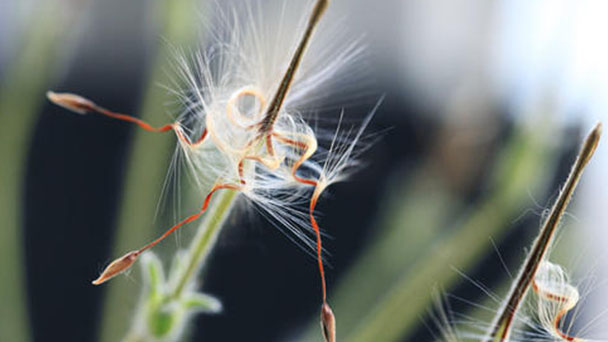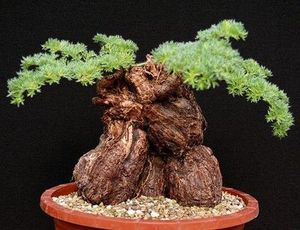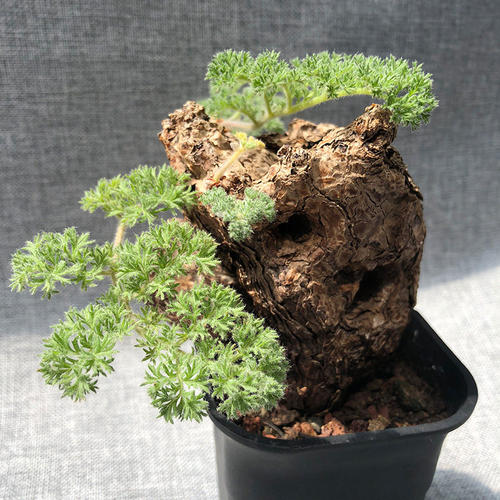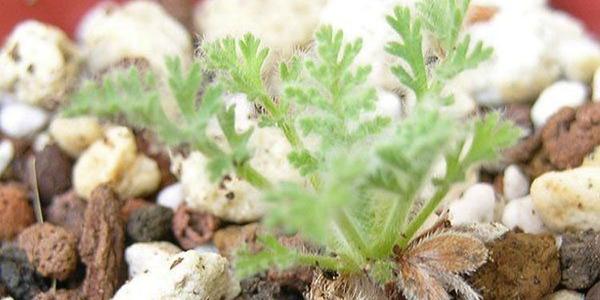Pelargonium Appendiculatum Growing Tips
Written by Maggie
Nov 10 2021

Pelargonium appendiculatum, a plant that looks like it's sprouting on an old stump, is actually its root -- a huge old surface like ancient bark. Pelargonium appendiculatum can admire not only its roots and flowers, but also its seeds! A lot of people have been buying Pelargoniumtriste lately, but they don't know much about Pelargoniumtriste. Today, let's take you to learn about Pelargonium appendiculatum and how it's raised.

Pelargonium Appendiculatum's Growth Habits:
Pelargoniumtriste is a winter plant that grows during the cold season and sleeps during the hot season. Pelargonium appendiculatum likes full sun and well-drained sandy soil. During the warm winter growing season, Pelargoniumtriste can tolerate a 0°C temperature environment for a short time, but too low temperatures will enter dormancy and can be placed on a bright windowsill for wintering. The Pelargonium appendiculatum goes into hibernation during the hot summer months, keeping the soil dry.

Pelargonium Appendiculatum Propagation:
Pelargonium appendiculatum seeds reproduce by sowing. Pelargonium appendiculatum seeds have a short lifespan, germinate at a minimum temperature of 13°C and germinate in 2 weeks. After the seedlings are basically formed, they can be transplanted to small pots for independent cultivation, and put into indoor cultivation in summer and winter.
Planting in the lawn edge, rockery and other garden pieces and roadside are very suitable, but also with the red berberis, rich rose and other combinations. Planted into a variety of patterns of color, the effect is excellent.

Latest Updated
- Benefits of Bugleweed - 7 Science-backed Health Benefits
- Bugleweed Dangers & Side Effects - Is It Poisonous?
- How to Plant Evergreen Trees - What You Should Know
- When to Plant Evergreens - Grow Guide for Evergreen Trees
- 12 Wonderful Evergreen Shrubs for Your Garden
- 12 Popular Evergreen Plants with Pictures for Beginners
- When And How To Prune A Lilac Bush Like a Pro
- How to Grow & Care for Lilac Vine (Hardenbergia Violacea)
- Japanese Lilac Tree (Syringa Reticulata) Care & Propagation Guide
- Shumard Oak Pros and Cons - What to Know
Popular Articles
- Winter maintenance of Antirrhinum Majus
- How to Grow Terminalia Mantaly Tree
- How to Grow and Care for Crossostephium Chinense
- How to grow Antirrhinum Majus in spring
- Peristeria Elata (Dove Orchid) Profile: Info & Care Guide
- Underwatered Snake Plant (Sansevieria Trifasciata) - Signs And How To Fix
- How to Care for Brazilian Jasmine Plant (Mandevilla Sanderi)
- How to Grow & Care for Graptopetalum Purple Delight in Summer
- Rosa Chinensis (China Rose): Plant Growing & Care Tips
- How to Care for Baby Sun Rose (Aptenia Cordifolia)